All About Antiquing Glaze for Cabinets and Furniture
Color tinted and antiquing glazes are an easy way to customize cabinets and furniture!
Lately, I’ve been getting a lot of questions about glazing cabinets and furniture. I thought we would walk through all of the different types of antiquing glazes available and the surfaces that they can be applied to.
Plus I teach you the pros and cons of each type of glaze or wax, so you can choose the best option for your paint project.
Since several pieces in my home are glazed or antiqued, there are multiple tutorials on how to glaze or antique cabinets and furniture at the bottom of this article.
Types of Antiquing Glaze
First of all, let’s talk about the purpose of a paint glaze. Glazing a piece of furniture or cabinets creates depth and dimension.
It isn’t just for aging, which you may have thought was the only use.
Beautiful faux finish techniques use glazes to develop layers and mimic textures over solid colored paint.
You can use antiquing glazes to create a variety of finishes:
- Aged finish
- Driftwood or Seadrift finish
- Reclaimed wood finish
- Highlight carved details
- Create a dusty weathered look
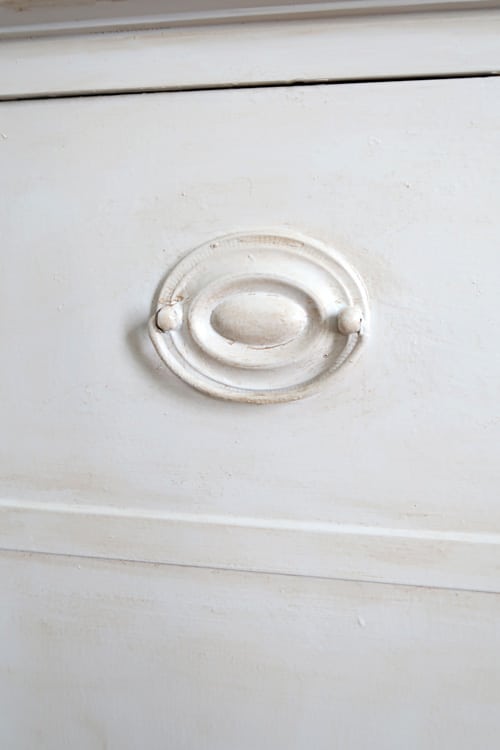
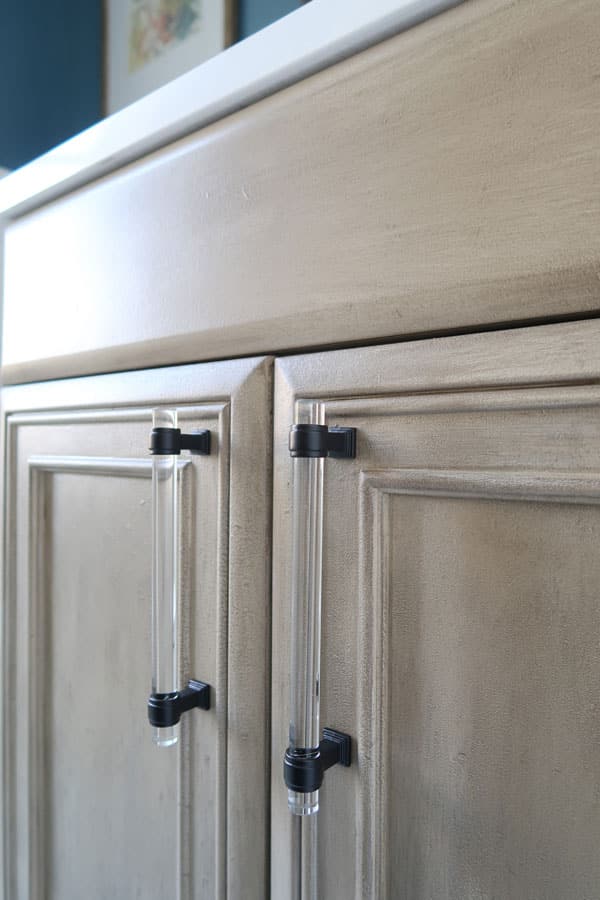
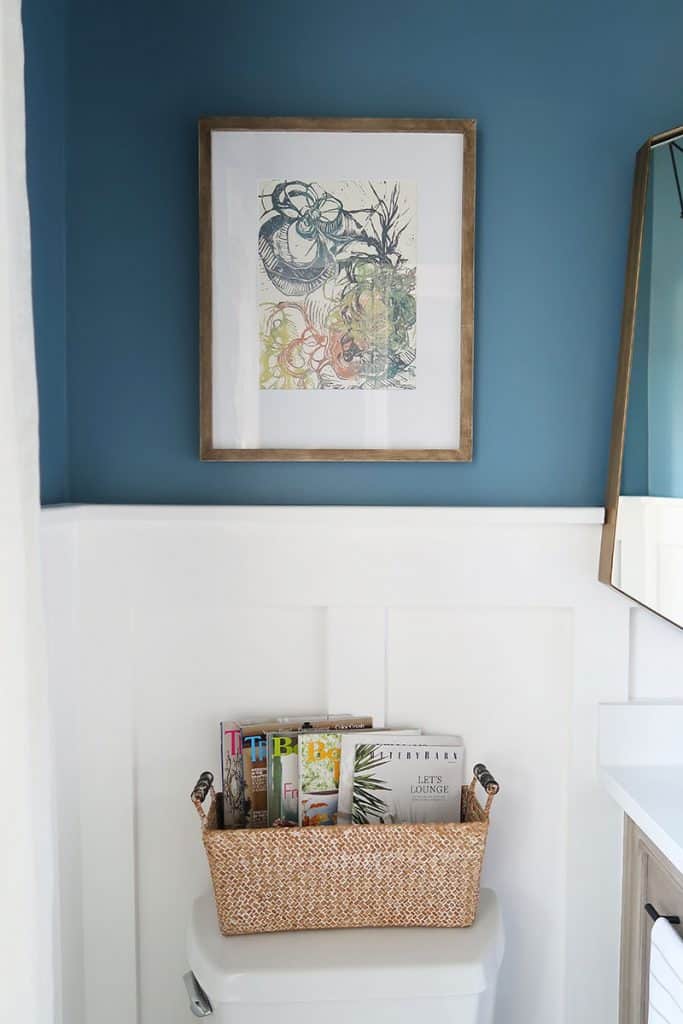
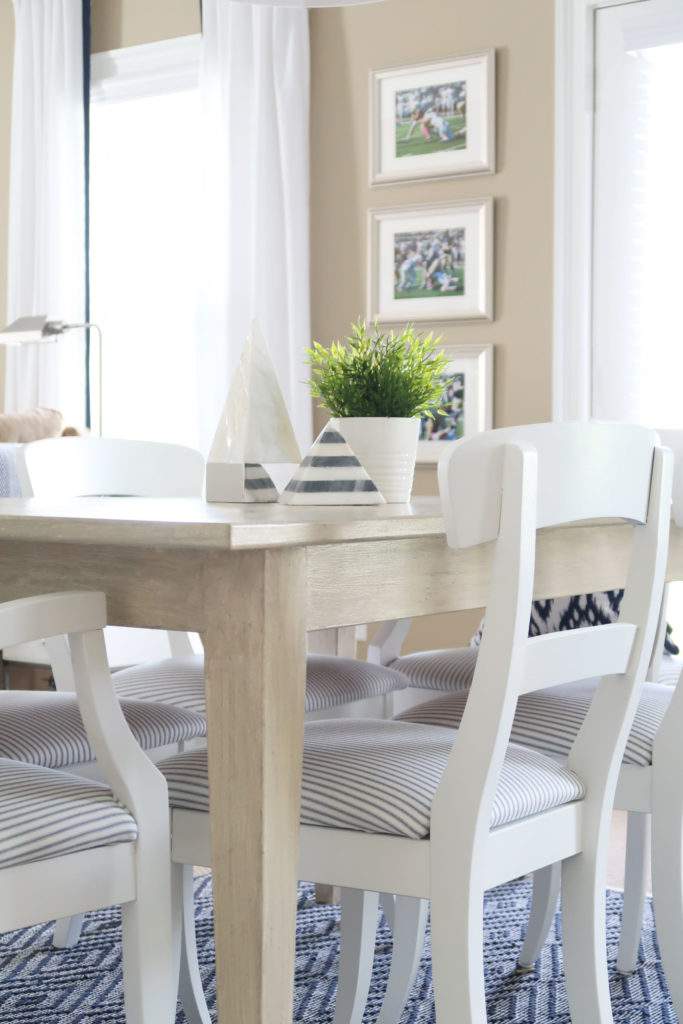
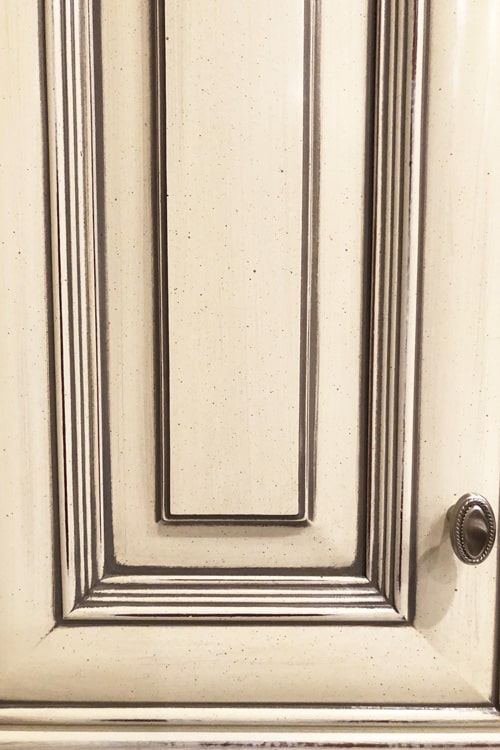
You can use a glaze over a wide variety of surfaces:
- Chalk paint
- Latex paint
- Stained wood
Some people will glaze over surfaces coated with a polyurethane, but I would NOT recommend this due to the lack of adhesion and long term wear.
I provide a better alternative over polyurethane below.
There are 4 primary ways to create an antiquing glaze for furniture or cabinets:
- Buy a pre-made glaze in a dark brown
- Mix clear glaze with a shade of brown paint
- Combine brown paint and water as a wash
- Apply a pre-made brown wax
In looking at the 4 glazing types, they offer different benefits as you apply them but the end result will be very similar.
The “open time” or “working time” to manipulate the product varies greatly between a regular glaze, water based glaze, and a wax.
Want to know HOW-TO PAINT CABINETS?
Store Bought Antique and Tinted Glazes
- Pre-tinted color glazes are the easiest to use, but come in limited colors.
- Manufacturer glazes provide the longest “open time”, which means you can manipulate the glaze longer.
- They are great for layering as well, since you have so much control over application.
- They are thicker and can create lots of brush mark textures.
- Clear glazes make it so you can create a glaze in any paint color you choose.
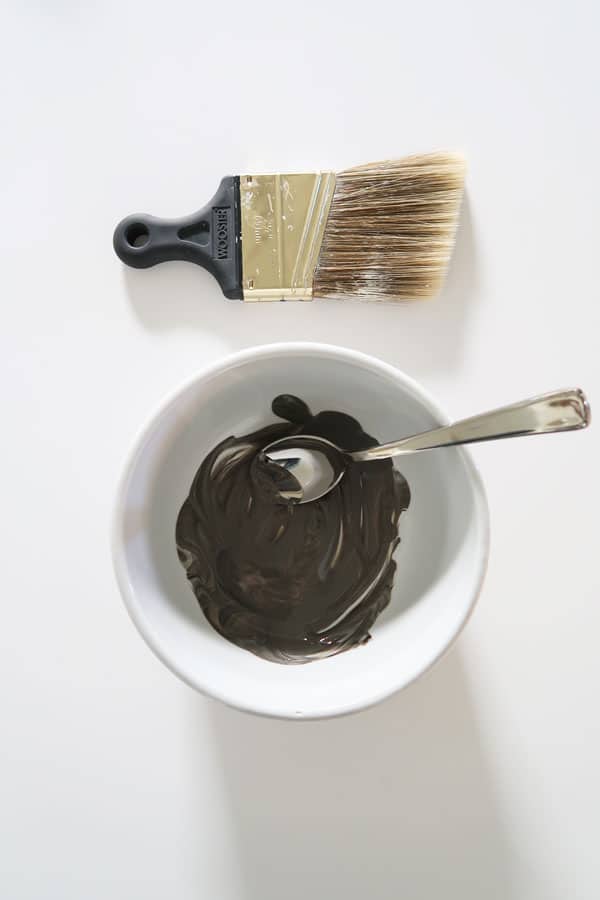
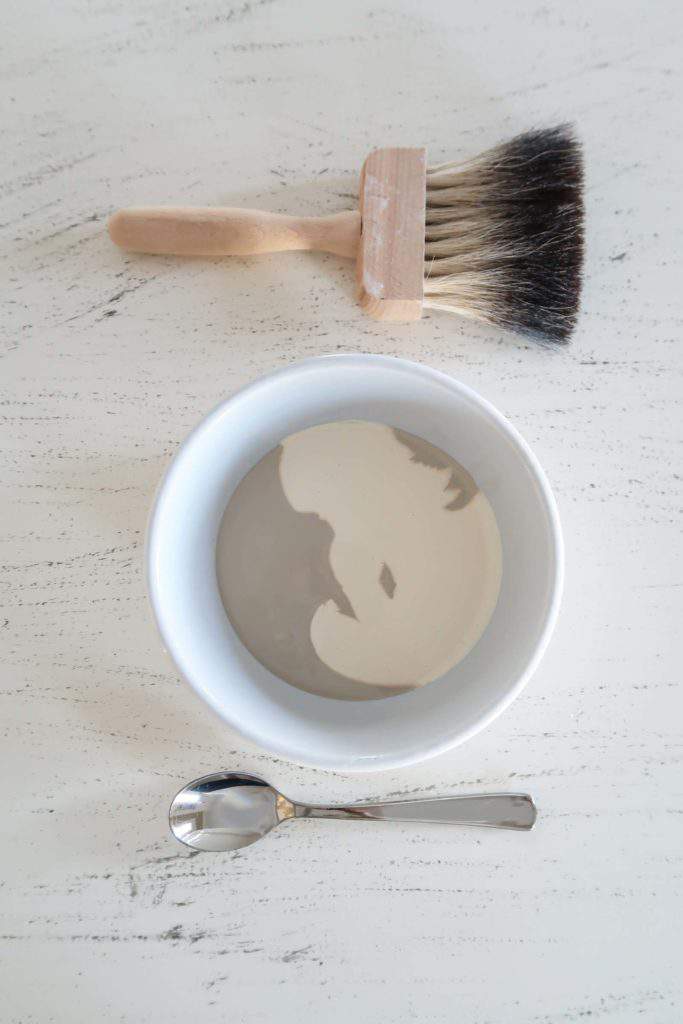
Post contains hand selected products, with affiliate marketing links throughout {full disclosure here}
Shop Pre-Tinted and Clear Mixing Glaze
Unfortunately, I don’t have the ability to use pretty affiliate links for Lowe’s products but Valspar Glazes are my favorite products and used throughout my projects.
Water and Paint Antiquing and Tinted Glaze
- Water mixed with paint is going to have the shortest “open time”. This is the least expensive option, since you can mix any paint with water.
- I’d recommend this for the more experienced painter, since getting the ratio just right and applying to get the correct look needs to be more precise.
- Water glazes can be layered for darker looks.
- You have to be more careful with a water based glaze to not harm the base coat of paint.
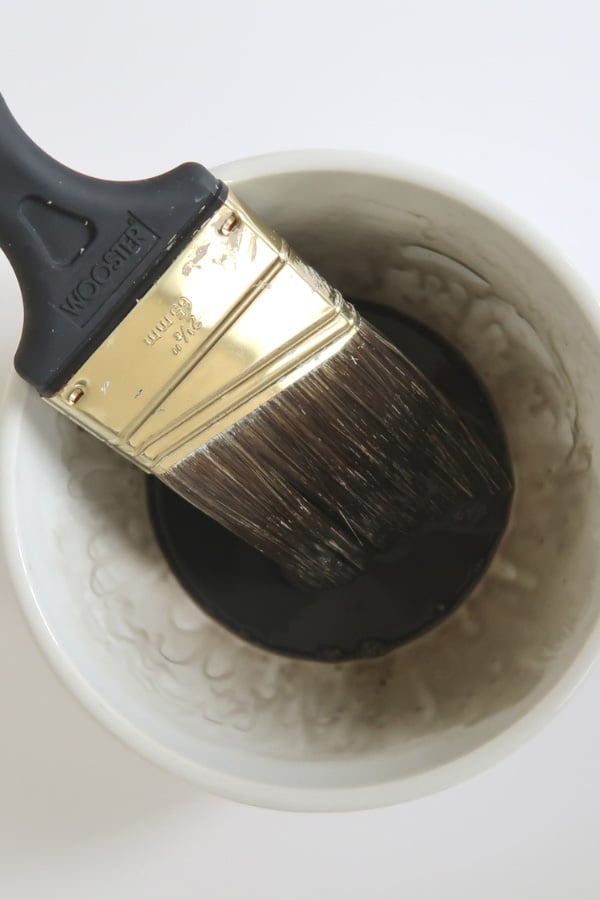
Antiquing Wax
- Technically, the wax based antiquing process isn’t considered a glaze. Instead, just another way to get the same effect.
- Waxes are a little harder to apply, but can be layered. They take some effort to work them into the surfaces.
- Waxes also have the longest “open time”, since they never fully dry and are buffed to the desired sheen.
- A secondary benefit to a wax is it acts as a protective coating providing scratch and water resistance.
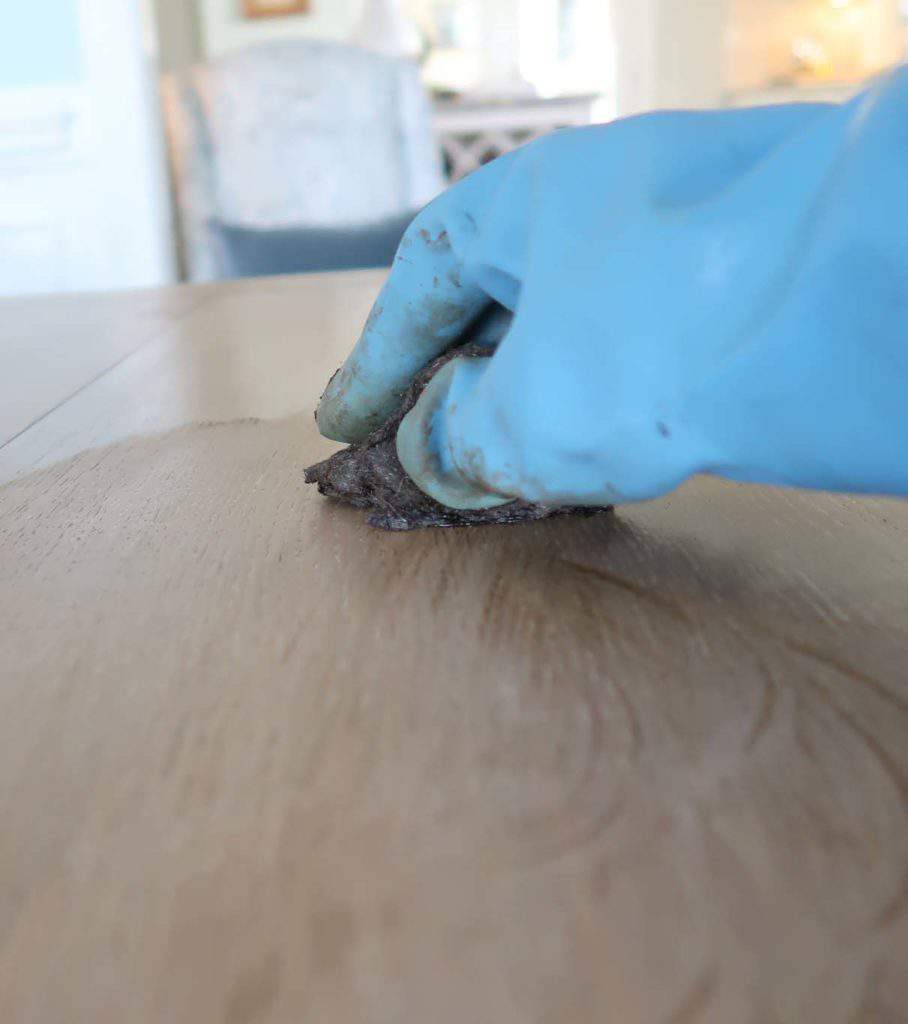
What is AMAZING about using an antiquing wax is it can be used over just about any surface – even polyurethane!
Shop Brown Wax
Furniture and Cabinet Glazing Projects
Now that you know SO MUCH about glazing and the differences in each type you probably want to see some projects!
Luckily, I have multiple tutorials that I can share with you to review and see what technique feels the most comfortable for you.
Learn how to use paint glaze and wax to antique cabinets and furniture. Tutorials include both the Pottery Barn Driftwood and Seadrift faux finishes. The chalk paint tutorial I created a gray wash glaze with water, for a completely different look. 3 Easy Paint Steps to make Any IKEA furniture look like the Pottery Barn Seadrift Finish (aka driftwood finish) The way I’ll teach you to antique furniture is easy, straight forward, and can be used on ANY finish: over polyurethane, bare wood, or paint!Paint Glazing Projects
Paint White IKEA Furniture the Pottery Barn Seadrift Finish
How-to Paint the Pottery Barn Seadrift Finish
How-To Create the Pottery Barn Driftwood Finish
Easy Driftwood Paint Finish for Outdoor Furniture
A New Way to Antique and Patina Furniture
Yes! You Can Use Chalk Paint Over Stain
Do You Need to Apply a Sealer Over Glaze?
My simple answer is not always! Linked below are a wide variety of projects I’ve completed using the different types of glazes.
In every project, including my outdoor faux driftwood finish I didn’t seal anything.
To protect the white wash glaze over a chalk painted piece, I did seal the legs of the furniture with a matte Polycrylic to protect it from the vacuum cleaner and kicks.
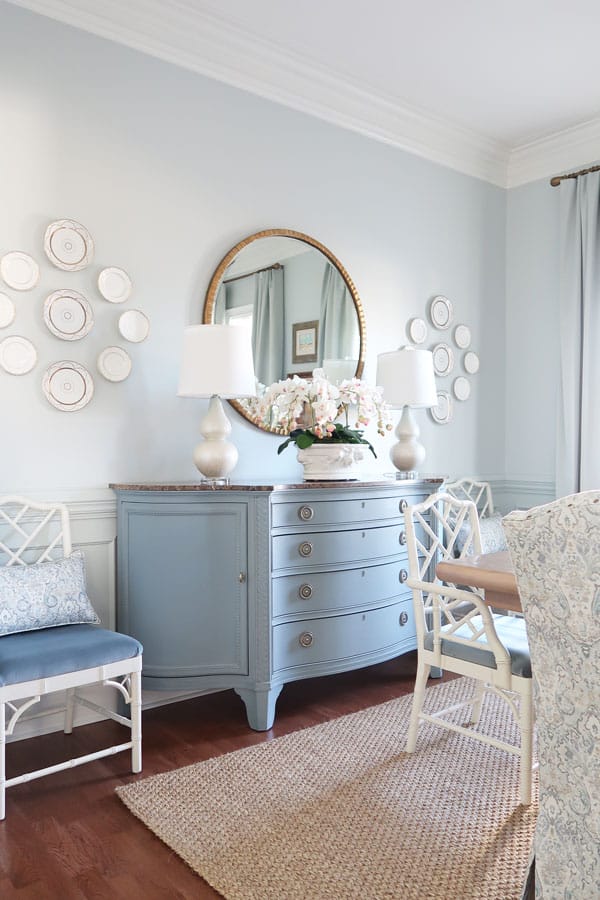
All of my projects have worn extremely well without issues.
- The ONE time I would say you must use a clear top coat is if you faux finish a table top with a glaze.
- A horizontal surface would need to be sealed and my favorite product is Minwax Polycrylic.
Glazing and antiquing is really one of the easiest ways to give a painted piece of furniture or cabinets more visual interest, depth, and personality.
Pin It for Later!
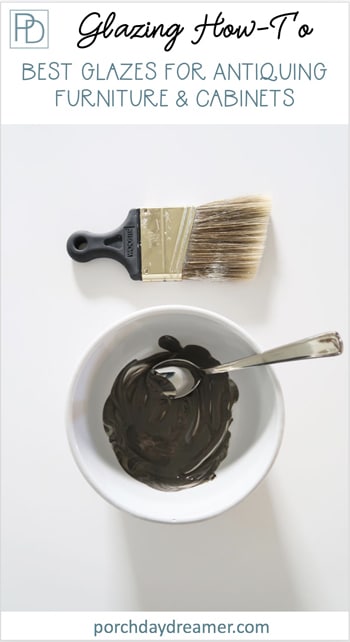
Pin It for Later!
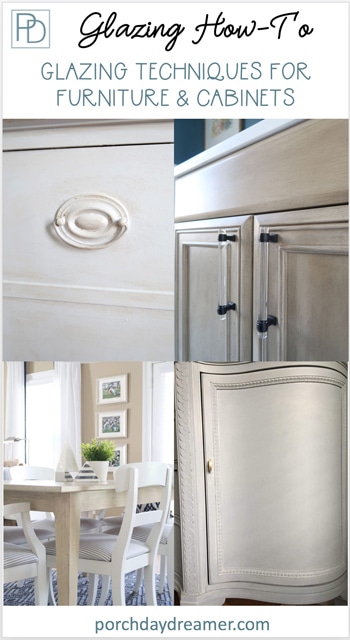
My faux finishes are very easy to recreate with a little practice and luckily when using a store bought glaze you can wipe it off if you make a mistake.
Good luck to you in your painting adventures!
As my FREE GIFT to you, with email sign-up a detailed paint sheen project guide!
You will know the right sheen for every project…
Please consider following me on Pinterest and Instagram for daily inspiration.
Until next time…
Porch Daydreamer
Tracey

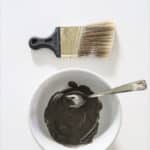

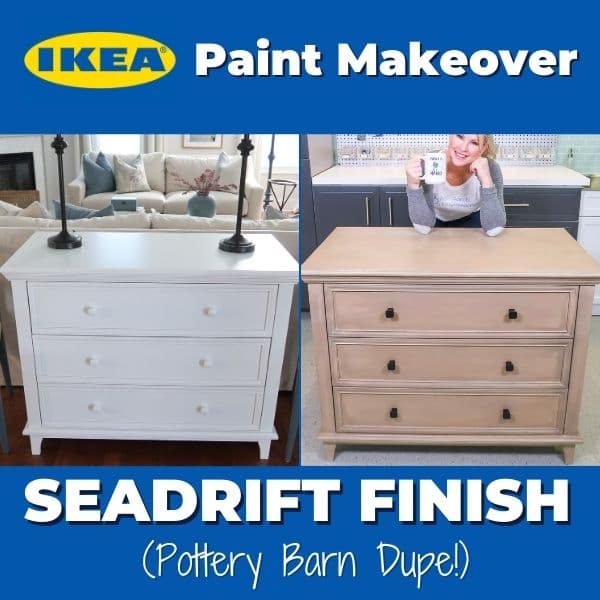
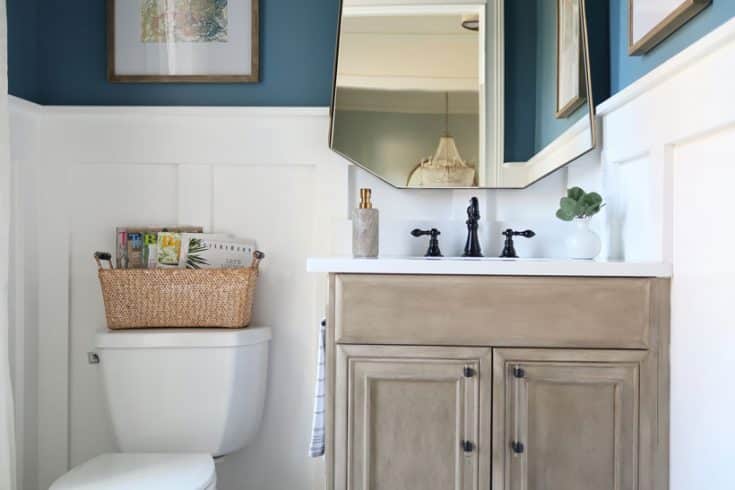
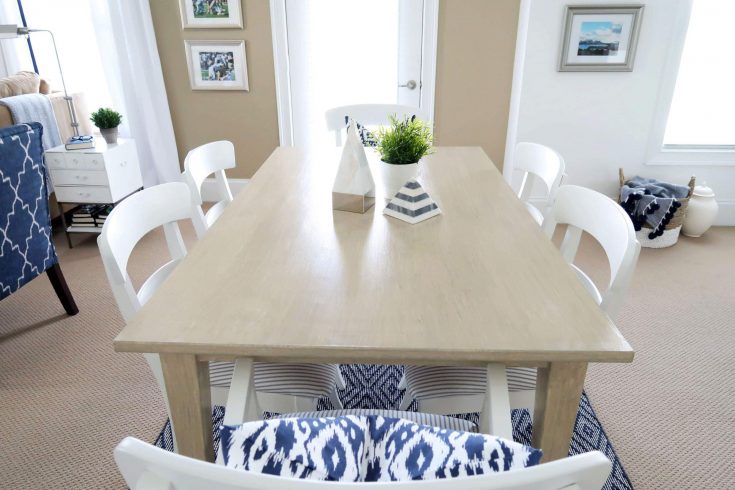
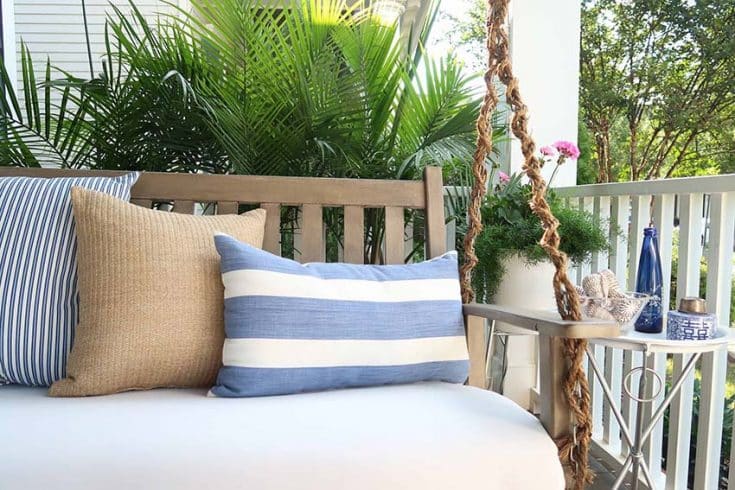
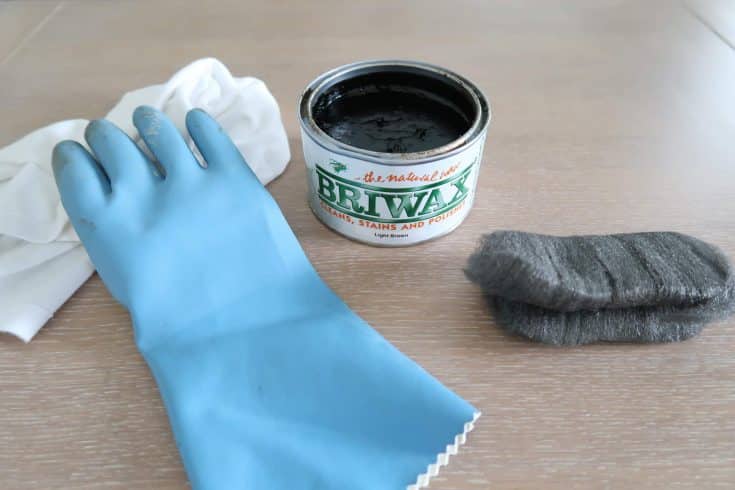

Hi Tracey. I have tried a sample (inside of my orange oak door) of the Valspar Antiquing Glaze . I love the color it gives, however , now that it’s dry, the wood feels very dry/rough. Do you have any tips of what I should do different. Thanks
The glaze does leave a matte finish. You can use a water based polyurethane over the top in a satin finish to help how it feels and to protect the finish. Make sure the glaze dries for a few days, before applying the polyurethane.
Hi Jo! How do I highlight just the inside raised edges of my cabinets, and not glaze the entire flat surface?
Hi I was wondering how long my Valspar antiquing glaze has to dry or cure,before I seal it with polyacrylic?
Hey, Amee! If you click through to some of the tutorials I’ve linked in this post there are more specific tutorials. I always let the glaze dry overnight to 24 hours make sure it’s adhered to the surface. Test a small corner first with the polyurethane to make sure it isn’t pulling off the glaze. Good luck!
How do I get the glazed look with the durability of poly? I’m doing bathroom cabinets and planned on doing several poly coats over my chalk painted cabinets, but then decided I want the dimension of a glaze over the chalk paint.
Lindsey, I wouldn’t recommend a chalk paint for bathroom cabinets. I have a bunch of tutorials on painting cabinets with Valspar Cabinet/Furniture Enamel that dries to a hard finish. I’ve glazed over it and then a couple of coats of poly in this tutorial. https://porchdaydreamer.com/pottery-barn-driftwood-finish/ Here are all of my paint tutorials: https://porchdaydreamer.com/paint-project-resource/
I have orangey oak cabinets in my kitchen and long for something similar to a warm driftwood finish. They are hardwood so I can’t bring myself to just paint them the way everyone else is doing if there is another option. Is there a way to preserve the real wood grain but lighten and tone to the color I want by using a mix of paint and glaze or some other product? I really appreciate your time and input! 😊
Hi! Cherie, I don’t have a tutorial for it but your best option is to strip the finish and see what it looks like bare. Then you could apply a glaze or stain over the top to lighten the color or if you like it natural appearance apply polyurethane. Driven by Decor stripped a small table and did this, so search her site for “refinishing a table”. Paint and one of my driftwood tutorials would be easier 🙂 Hope that helps!
Thanks for all the information. I bought the clear glaze and a paint sample to practice with. I was told by professional cabinet painters that they use oil based paint to mix with glaze. What do you use?
Hey, Jo! I’m not a fan of oil based paints: they have a high VOC and yellow over time. The glazes I use are all water based and I always use latex paints (which is what a sample would be from any major paint manufacturer). Hope that helps – I worked for Valspar Paint for 5 years.